No one is prepared to stop the robot onslaught. So what will we do when it arrives?
You’ve heard about the robots—how they are on their way to vaporize the jobs of tens of thousands of bankers and brokers on Wall Street, in the City of London, and in trading hubs around the world. How they are bent on inflicting similar mayhem in law and accounting firms, and in computer-programming pools.
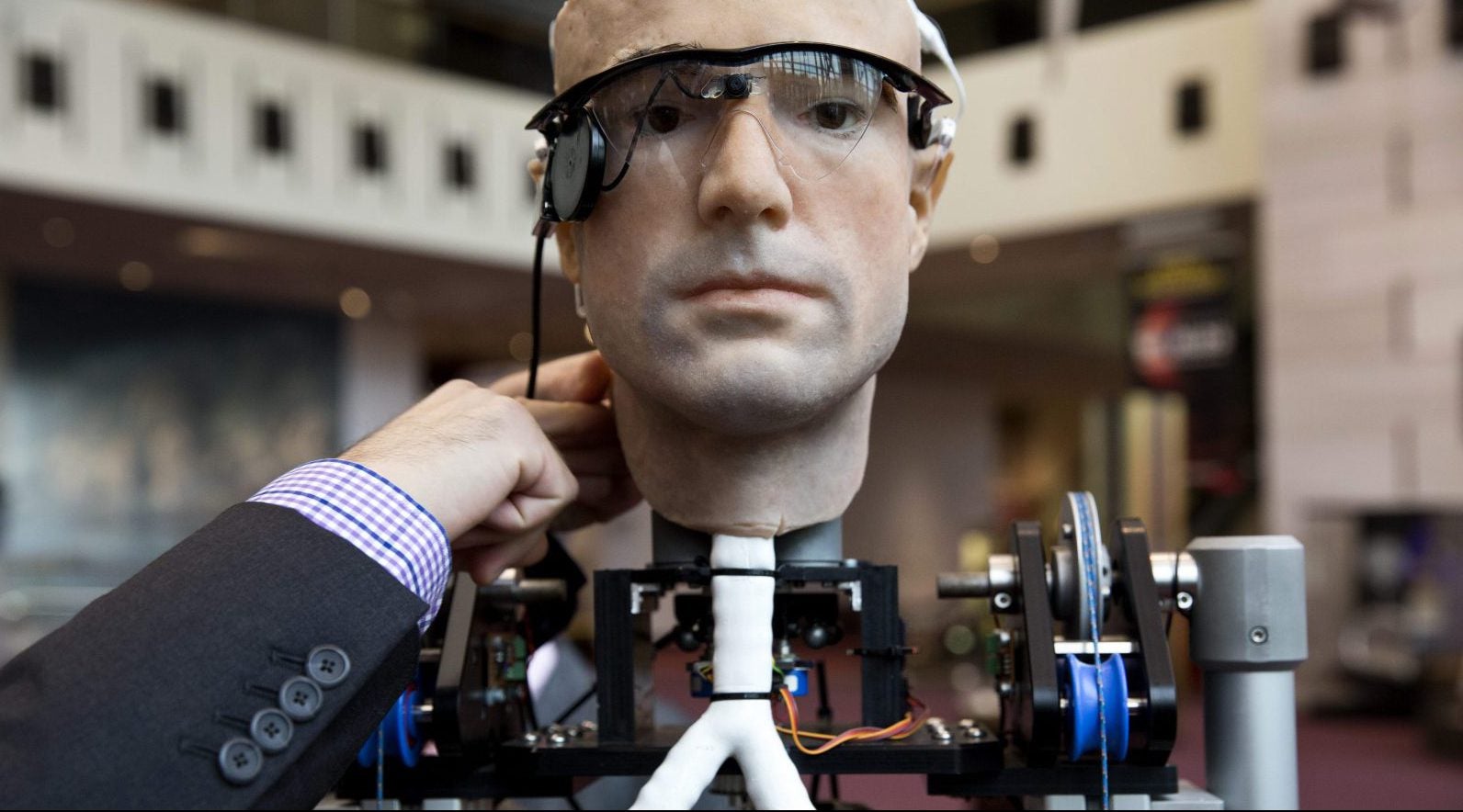

You’ve heard about the robots—how they are on their way to vaporize the jobs of tens of thousands of bankers and brokers on Wall Street, in the City of London, and in trading hubs around the world. How they are bent on inflicting similar mayhem in law and accounting firms, and in computer-programming pools.
How, if you wear a white collar, male or female, watch your back.
And how all that’s just for starters. Advances in supercomputers and the understanding of neural networks are combining to create a revolution in robotics, and companies eager for more profitability and cheaper production are ruthlessly grabbing the new technology to automate rote jobs.
Blue-collar workers—forget about it. The robots will kill off the positions of half a million oil-rig hands, up to half the industry’s workforce around the world, along with hundreds of thousands of warehouse employees, Amazon-ized by automated forklifts and other machines. Then there are the drivers—the navigators of taxis and long-haul trucks, who make up some 17% of the adult US work force, adding up to about 7 million people, to be replaced by robot cars if competition from Uber’s roster of of 1.5 million drivers doesn’t put them out of business first. Fast-food workers—the hard-working teens, first-generation immigrants, and return-to-work moms who are the bedrock of burger joints everywhere—are also on the firing line as ordering kiosks begin to take the place of human cashiers.
Estimates of how many jobs in all the robots will wipe out, and when, vary wildly. Economists say somewhere between 9% and 47% of workers in the West could lose jobs to automation over the next two or so decades. They forecast that as much as 40% of the Fortune 500—the companies as a whole—could vanish entirely within a single decade, driven out by algorithms. In China and India, meanwhile, they predict the disappearance of between 25% and 69% of jobs.
Industries have weathered massive disruptions before. Through two centuries of technological revolutions, positions eliminated in one sector have been replaced by even more jobs in others. Perhaps this time will be the same; or perhaps technology will overwhelm the capacity for ingenious humans to invent sufficient new businesses to employ the population.
Perhaps in a lot of cases, not entire jobs, but large percentages of the duties involved will be diverted to robot labor. Either way, it seems clear that change is coming. How quickly it unfolds is another matter. In the case of 19th century British Industrial Age workers, historians note that it took six decades for laborers to resettle and start to win higher wages once factory automation took hold. How long it will take workers to adjust in the age of mass-market robots is not known, but as in the early Industrial Age, they seem likely to face a drawn-out and agonizing transition.
A vocal minority says that, if we are prepared to accept the robots unchecked, we had better think again—not only because of the consequences, but because of the preemptive actions they could inspire. “Do you think that people will just sit and let this happen?” asks Wendell Wallach, author of A Dangerous Master and a senior adviser at the Hastings Center, a New York-based research institute. “Truckers will shut down US highways. You could see this in Europe, too. If societies don’t get ahead of this, we could get some real nastiness.”
Only, the world has looked at the potential for a robot onslaught, and decided not to resist. In interviews, American technologists and a long list of historians, ethicists, and philosophers focused on science and technology told me in a seemingly unified voice that they had yet to come across a serious proposal for an outright ban on job-stealing robots, and that if they had, they would have thought it a bad idea, undoable, or outright absurd. A prohibition on robots “will impoverish everyone,” said MIT’s Andrew McAfee, co-author of The Second Industrial Revolution.
But wait. In much of the world, we negotiate climate and nuclear arms deals; we regulate the spread of disease and firearms; we take diplomatic or even military action against dictators; and build defenses against cyber attacks by rogue nations. In all these cases, we are seeking a rational de-escalation of a perceived existential threat. Do the robots and their makers—in Silicon Valley, Japan, and China—place our way of life in less jeopardy? And if they are as dangerous, are they truly unstoppable, akin to a force of nature? Given the political havoc already wreaked in part by working-class discontent, can we do nothing to stop or even slow what seems a mechanized approximation of an army of marching Huns?
In February, the European Union did consider rules that, while not stopping the robots, would have the force of discouraging automation by compelling companies to pay compensating taxes and social security payments for jobs that their robots wipe out. But EU parliamentary members balked even at this, adopting much milder language that exacts no retribution on the robots or the companies that use them. A pivotal dynamic in the vote seemed to be a reluctance on the part of the deputies to expose themselves to possible ridicule as Luddites.
The tableau of our times is anxiety over lost control over our lives and societies. But if you can imagine that sensation magnified twice, thrice, four times, you are starting to get at the potential danger in the new age of robots. That does not necessarily mean we must surrender. People are contemplating remediating actions short of stopping the robots outright. Many of the most interesting involve taking control of our own future. That is what the rest of this story is about.
This is not a drill
In 1952, Kurt Vonnegut published his first novel, Player Piano, in which he imagined a weird, heavily automated future in which the United States was led by president Jonathan Lynn, the blow-dried former star of a three-hour TV show. At the apex of this hard-drinking, socially divided society, a tiny privileged elite of managers and workers possess skills that—for the time being—maintain their superiority to the machines. But the unlucky multitudes whom technology has already replaced have just two occupational choices: the army or public works. In exchange for this labor, they receive a government salary, funded by a robot tax equal to what a company would have paid the worker who has been replaced.
People still have to pass the time, and the idle and purposeless masses generally do so by getting soused, drifting, gaming, carousing, divorcing, and, when it’s all too much, committing suicide. The men seem prepared for a fight at the drop of a hat. But at the very beginning, what they did not do was give up their jobs easily. When the soldiers returned from a world war to find machines had replaced them at work, they erupted in riots that had to be put down by force.
One of the main grievances in Vonnegut’s telling is the passing of outsized risks to take for outsized reward. A character grouses, “Used to be there was a lot of damn fool things a dumb bastard could do to be great, but the machines fixed that.” He goes on:
You know, used to be you could go to sea on a big clipper ship or a fishing ship and be a big hero in a storm. Or maybe you could be a pioneer and go out west and lead the people and make trails and chase away Indians and all that. … Now the machines take all the dangerous jobs.
The terrifying forecasts around robots and jobs have broadened the wave of popularity for dystopian literature. Along with George Orwell, Sinclair Lewis, and Joseph Roth, interest has been rapt in Martin Ford’s The Rise of the Robots and The Second Machine Age, by MIT’s McAfee and Erik Brynjolfsson, the director of MIT’s Initiative on the Digital Economy.
It is because people want clues as to what the ominous set of circumstances will bring. Until now, the economies of the world have always created a sufficient number of new jobs to sop up workers displaced when technology has wiped out demand for a specific skill. It has been this way since the start of the technology boom in the early 19th century, the time of the original Luddites. A number of labor economists say there is no reason to think this time will be different: yes, self-driving cars will kill jobs in Detroit and Stuttgart, but new, currently unknown industries will arise to employ the displaced, these theorists say.
But a considerable body of scholarship is challenging that orthodoxy. The reason, says an opposing group of thinkers, is that, unlike other periods of technological upheaval, the current displacement is happening not in a single industry, but across economies; there will simply be too many people, in too many different industries, to soak up everyone. Eight and a half decades after he first posited a theory called technological unemployment, John Maynard Keynes may finally be right that new technology can be so powerful that you end up with wide swaths of the permanently unemployed.
With his portrait of the coming automation of massive classes of jobs, Ford paints a picture eerily similar to Keynes’ and Vonnegut’s. Data are not kept on how many jobs have been lost to robots and automation, but it’s generally thought to be as many as 5 million since the 1990s in the US alone (see chart below). In the future, according to a much-discussed study published by the US National Bureau of Economic Research, workers in the West whose jobs are eliminated by industrial robots—about three jobs per robot, the study estimates—may take a long time to find new employment, and they may never do so. The study, by researchers Daron Acemoglu of MIT and Boston University’s Pascual Restrepo, describes how, even when jobs are created, they are often not in the same places where they are lost, leaving behind the blighted cities and regions, with their opioid epidemics and other social crises, that feature so significantly in today’s political upheaval.
In response, you could hypothetically outright stop robots, by shutting down factories and halting robot imports from China and Japan, for example. But then “you close down what has been our main productivity growth,” said Wallach. That makes it a non-starter. Yet if you don’t do enough to curb the excesses of their impact, he noted, “you get productivity growth, but not equitably in life.”
There is no way to know in advance who will prove to be right—the techno-optimists arguing that, don’t you worry, the economy will keep churning out sufficient jobs; or the pessimists who say we are heading to a global employment crisis. Not generally a gloomy theorist, Wallach says that, even if you aren’t sure, the stakes are sufficiently high to play it safe. “Most of us just have unease about machines taking over human destiny,” he deadpanned. Policymakers, he says, need to begin making a plan.
Meanwhile, lots of people are going to figure this out
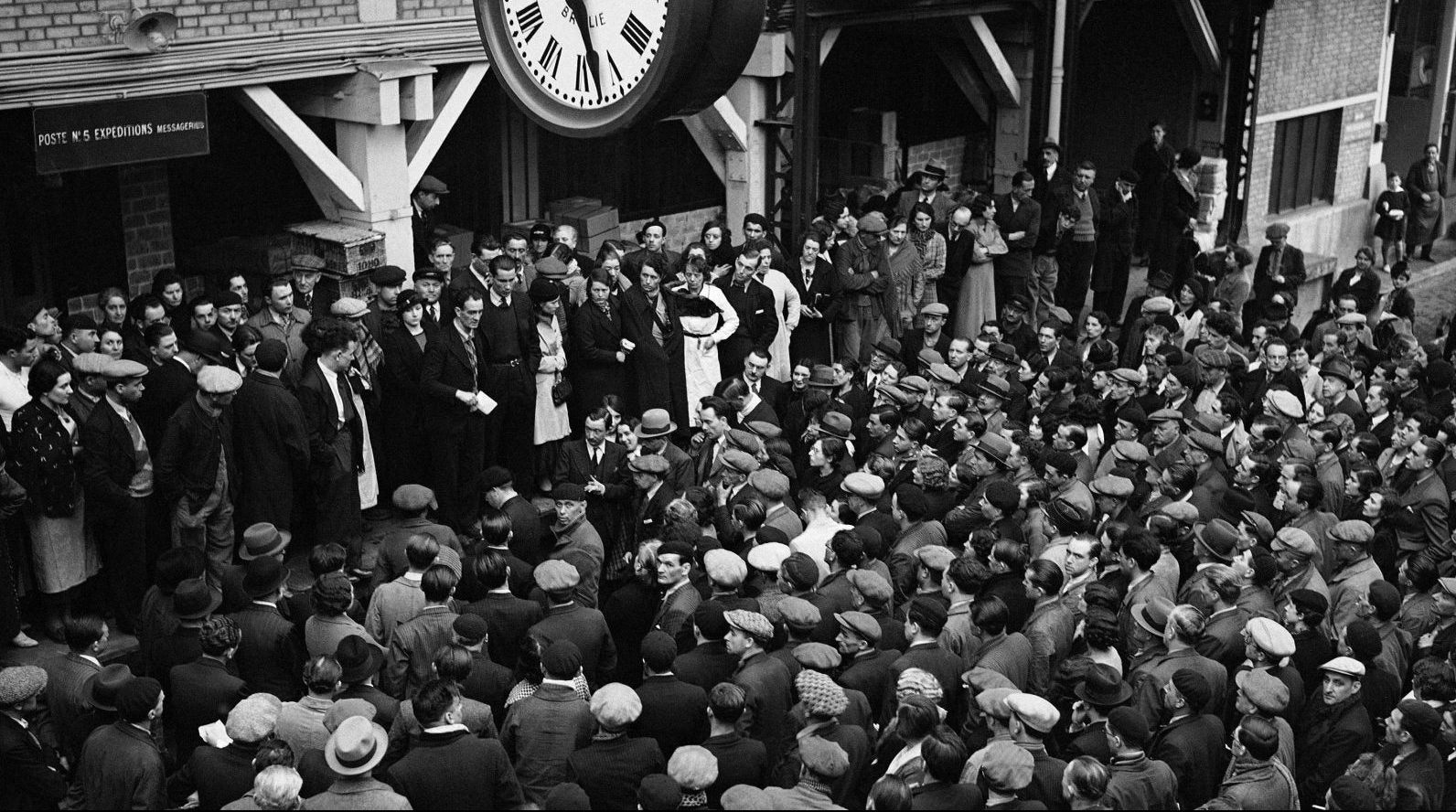
All last year, Donald Trump and his surrogates beat a drum about the hollowing out of the US middle class and the jobs that once supported it. In their telling, it was illegal immigration and catastrophic trade deals that caused the damage. In power, the new US president’s administration has hewed to the same position. In March, Trump’s Treasury secretary, Steve Mnuchin, said the problem of job displacement by robots is “not even on our radar screen” since it will only come “in 50 to 100 more years.”
But the Trump team’s claims were spurious. The US is manufacturing much more stuff with many fewer workers (see chart below), mainly because of automation. As for Mnuchin’s remarks, they made him the subject of immediate, brutal public snickering. Larry Summers, who held Mnuchin’s job in the Clinton administration, compared his successor’s views on robots with “what global climate change denial is to atmospheric science or what creationism is to biology.”
A study released in March by consulting firm PwC estimated that 38% of American jobs would be lost to robotics and artificial intelligence by the early 2030s; Germany would lose 35%, Japan 21%, and the UK 30%. Newly created jobs will take some of the sting off these numbers, but the forecasts offer more confirmation about the general expectation of what is to come. That is, massive unemployment could be here in just a decade and a half, something worthy of a spot on Mnuchin’s radar screen now.
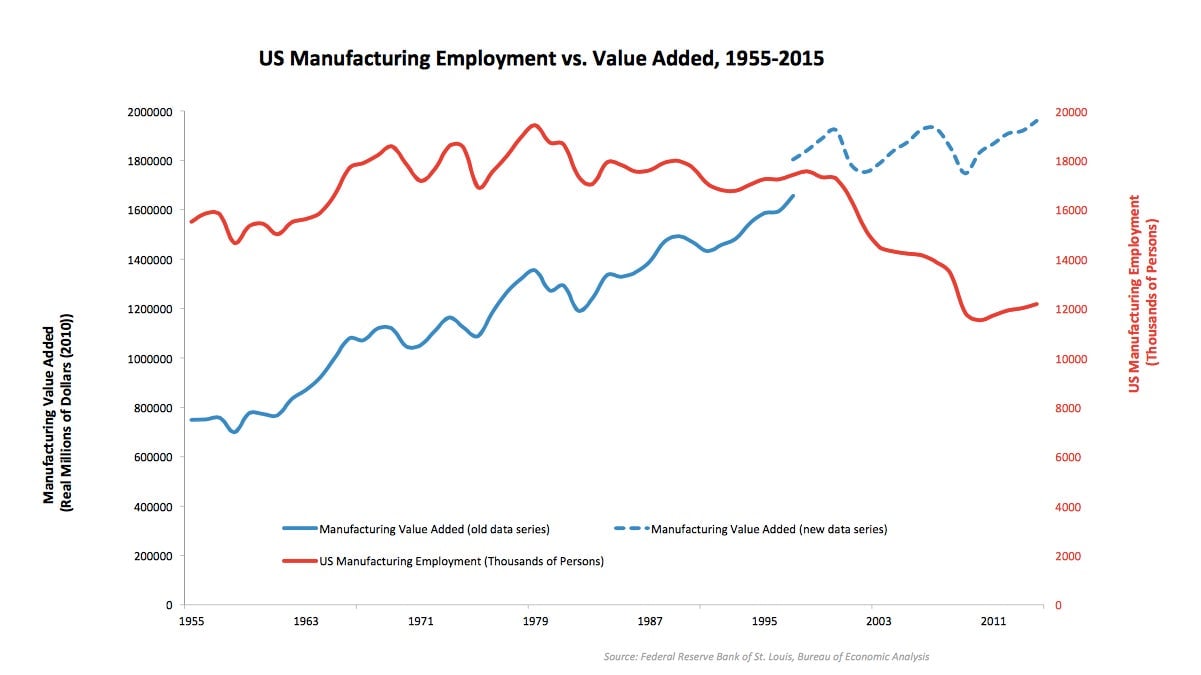
People on the trigger end of this coming jobs debacle have delivered perhaps the starkest warnings. Tesla’s Elon Musk and Google’s Eric Schmidt, whose companies are leading the auto industry into the self-driving age, have been ringing the alarm to get ready for the coming disruption. In January, Schmidt said that, at first, the robot age will bring a job surge in factories, for example to develop self-driving vehicles. Robots then will begin to replace workers in larger and larger numbers, and create a potential crisis if not handled correctly. “So we might as well assume it’s going to happen and make it work well,” Schmidt said. A month later, Musk chimed in, saying, “It’s going to be a massive social challenge.”
Americans appear not to have yet absorbed the potential for substantial trouble ahead. Or, to be precise, they know that robots are bringing trouble, but they think they will hurt other people, while leaving them unscathed, according to a set of recent polls. Two-thirds of Americans think that robots will have taken over much of the work currently done by humans within a half-century—but that their own jobs will continue to exist in present form, according to a Pew poll published in March 2016. That survey was taken prior to Brexit and the solidification of the Trump campaign. A second Pew poll taken in May and June last year—just ahead of the Brexit vote and Trump’s acceptance of the Republican nomination campaigns—resulted in similar findings: 77% said that trade “hurts American workers,” and only half said the same about automation; 42% said that automation helps American workers.
Sooner or later these numbers will correct, probably right about the time when a critical mass of workers observes that robots are taking their jobs. And that is when the seething anger and resentment on display in Trump crowds during the campaign could pivot toward a different target from NAFTA and illegal immigrants.
At an artificial-intelligence conference in Asilomar, California, in January, MIT’s McAfee put up a slide. It said, “If the current trends continue, the people will rise up before the machines do.”
Serious people, including Musk and Stephen Hawking, are among those alarmed about a future peril involving artificial intelligence that, like Hal, Skynet, or both, obtains superhuman sentience and turns against the human race. In an interview with Maureen Dowd, entrepreneur (and Trump supporter) Peter Thiel belittled such thinking as “on the order of magnitude of extraterrestrials landing.”
But here is why things could get dicey if and when robots start eliminating whole classes of employment: Most people actually like to work, and to be paid for it. Most of us derive satisfaction—dignity—through our paid labors, even if the actual job may be routine. There is a long history of this. Brian Balogh, a professor at the University of Virginia and co-host of the Backstory podcast, sums it up neatly: “We feel proud of our work,” he says.
And that is why it’s best to be careful if you are messing with jobs, and the dignity and pride wrapped into them.
Policymakers haven’t begun to grapple with the robots
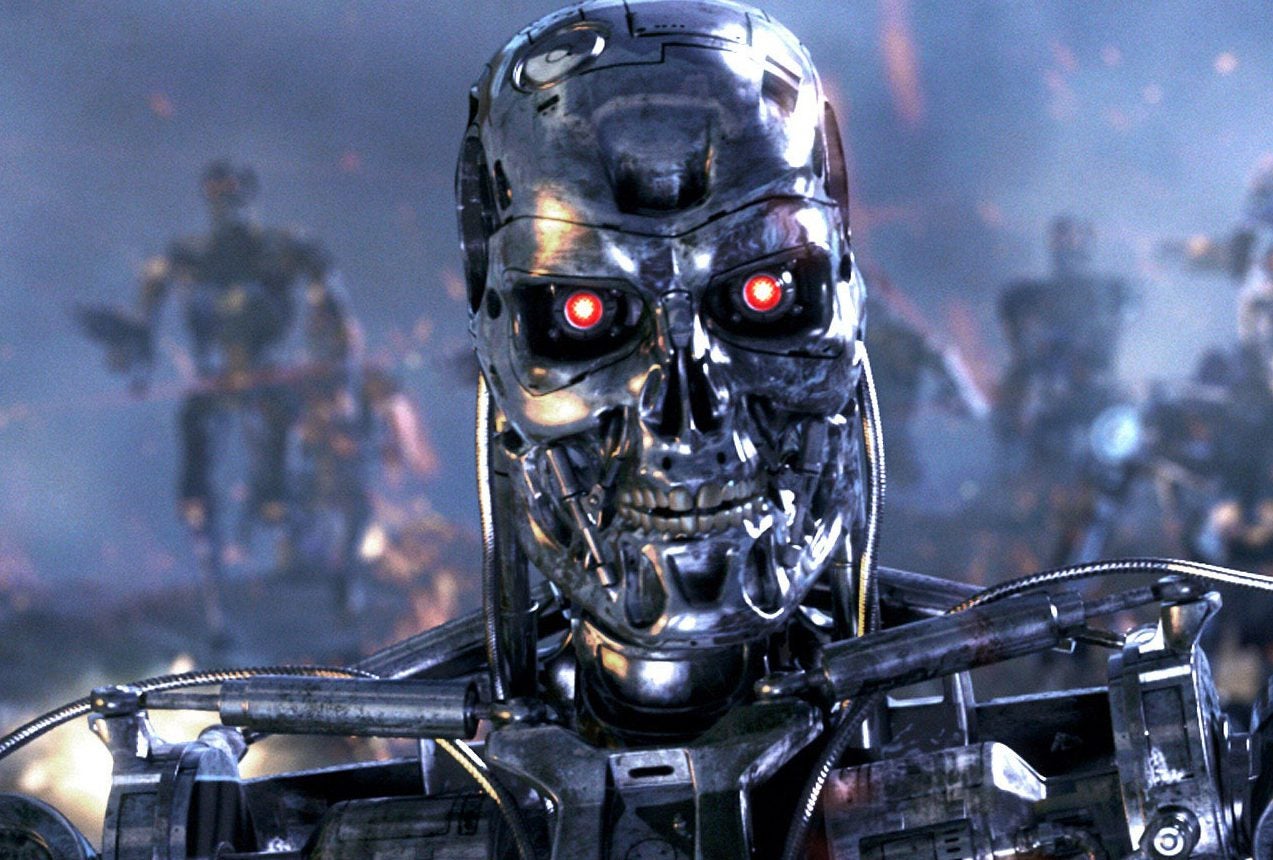
Andrew Feenberg, who teaches the philosophy of technology at Simon Fraser University in Vancouver, says that however you apportion the fault, there is a problem, and governments have put themselves in a fix. “Doing trade deals and robotics without consideration of the people displaced is insane,” he says. “The backlash is understandable.”
So how does the world prevent a gigantic, destabilizing uprising should—if the pessimists are right—entire classes of work vanish? When, as Wallach pictures it,”governments lose their legitimacy and you have people saying they aren’t going to take this anymore”?
The EU attempted to take an aggressive stand but ultimately capitulated to the philosophy that we must not get in the way of the march of technology. Meanwhile the US, as of now, is doing nothing, and as far as I can tell is not even seriously discussing the coming onslaught.
But outside government, the matter of robots and jobs is among the most-discussed problems of our era. The answer raised by a lot of people, especially in Silicon Valley, is the “universal basic income”—the payment of a fixed sum to every adult, regardless of income or wealth. At once, people would not have to worry about funding their basic needs. So frequent is this solution suggested that it has acquired its own acronym—UBI—which if you haven’t seen already, you will soon. It’s not a new idea but something suggested in different forms going back way before robots, at least to the 16th century, according to Philippe Van Parijs and Yannick Vanderborght, the authors of Basic Income, a new book on the subject. The philosophy behind the idea is that every person on the planet deserves some fruits of the society in which he or she lives by mere dint of living there.
The idea has its flaws. Among them is how to pay for it. Second is whether, given the profound anti-tax strain running through the US and other countries, it is politically realistic. Charles Murray, of the American Enterprise Institute, suggested last year that it is both fundable and realistic: As he proposes, the government would pay a $13,000-a-year basic income to all adults and actually save money (in the US, anyway) by doing away with existing government welfare and retirement programs including Social Security and Medicare. Many others in many countries have proposed a similar approach, differing mostly in the amount of the annual payment.
But would the basic income actually solve the problem? MIT’s McAfee doesn’t think so. He is fond of quoting a scene from Candide, the Voltaire classic, in which an old farmer remarks that his family’s work “preserves us from three great evils: boredom, vice, and need.” In McAfee’s view, the basic income takes care of need, but leaves much room for misery and mischief in the persistence of the other two dynamics. Vonnegut, if he were alive today, would no doubt agree.
Working with what we can call the Candide conundrum, Wallach attempts a tweak that he calls “guaranteed income plus.” Adults would receive a basic income and be expected to “do something for that,” he says. “People would create their own jobs. Or government would create new forms of work. Something to make life meaningful and constructive to society.”
Bill Gates is one of the only major figures proposing how to slow the march of the robots. Echoing Vonnegut, Gates has attracted much attention by suggesting a tax on robots. The way his thinking goes is that, just as governments tax workers, they would levy a substantial tax on the robots that replace them. The proceeds would fund needed services, such as care for the growing numbers of elderly people.
Larry Summers has taken a swipe against this idea, too, which he says will stifle innovation. But Gates’ idea has resonance, not because of its economic soundness or humanitarian features, but because it attempts to take control back from technology. Gates is saying in effect, technology is not a law of physics; we are in control. As Feenberg notes, ”Societies do have choices with respect to technology.”
One answer: Affirmative action for humans
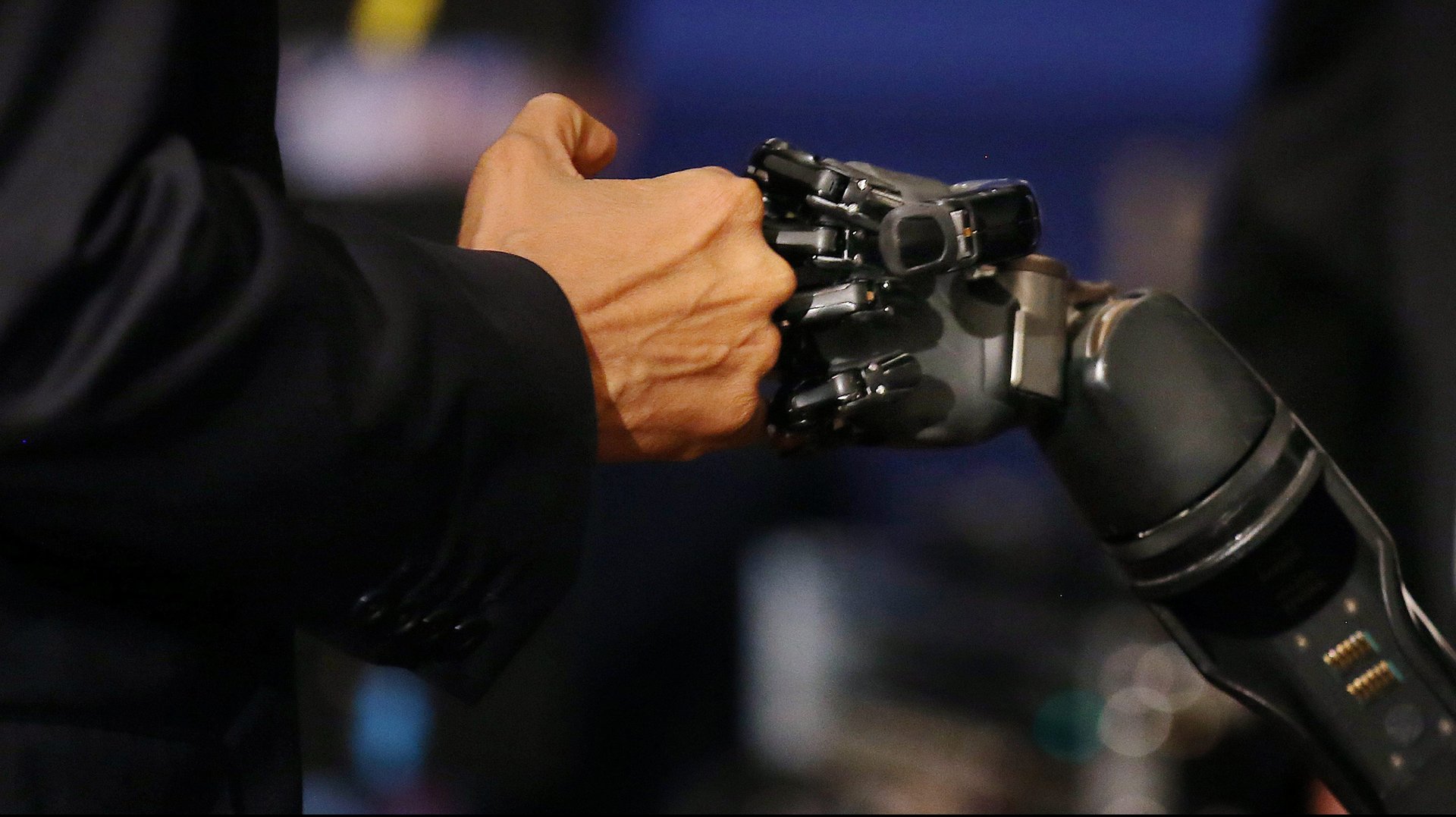
After a conversation with Mathew Burrows, who formerly produced the foundational global trends reports at the National Intelligence Council, I understood that we may be looking too hard for a novel solution. Over lunch, Burrows, who now sits at the Atlantic Council in Washington, proposed an idea closely resembling how fledgling petro-states attempt to avoid the resource curse. In what’s known as the “local content requirement,” foreign oil companies working in, say, Kazakhstan or Azerbaijan are required to employ a certain number of local workers, and to patronize local businesses and factories for their parts and services. This way, a petro-state isn’t receiving just cash payments, but mandated investment in its people and their businesses.
With robots, Burrows agrees with Gates’ tax idea, but also advocates a “human content requirement.” “You could have a rule that factories have to have 50% humans,” he says. “In other words, affirmative action for humans.”
On its face, the idea rings pathetic. Is this our lot after the millennia that led us to all this? As mere flotsam, kept around because we have to be?
Albert Borgmann, a professor of philosophy at the University of Montana, suggests that we stop worrying so much about the robots. Let them proceed with their plot to conquer manufacturing, while we humans turn back to our own roots—to communities, and to local, labor-intensive businesses such as breweries and crafts, and services like yoga and counseling. That sounds quaint and also quite limiting. How many potters, for instance, can a city realistically support? But Borgmann makes the case that such businesses can support a large labor force, and begin to attend to the health issues connected with the loss of jobs.
“Tech had a terrible impact on people’s health, attention and focus, and now threatens employment,” Borgmann says. “The reply should not be to stop it but to support a much saner kind of work. This would renew the fabric of society. It re-establishes the relationship between producers and consumers. And it runs counter to the disillusion of reality through screens.”
We are not going to stop the robots. The main reason is the tragedy of the commons: Unless every major industrial country agrees to forego the vast productivity gains to come from automation, then none of us can. Which leaves us culling the best of the solutions at hand, among them Gates’ tax on robots, Burrows’ affirmative action for humans, and Borgmann’s back to the basics. All would tilt the balance of power away from technology, and respond to the same to the question: Do we want robotization to happen unfettered, or do we want to be in charge of shaping our own future? The answer is simple. All that is left is to do it.